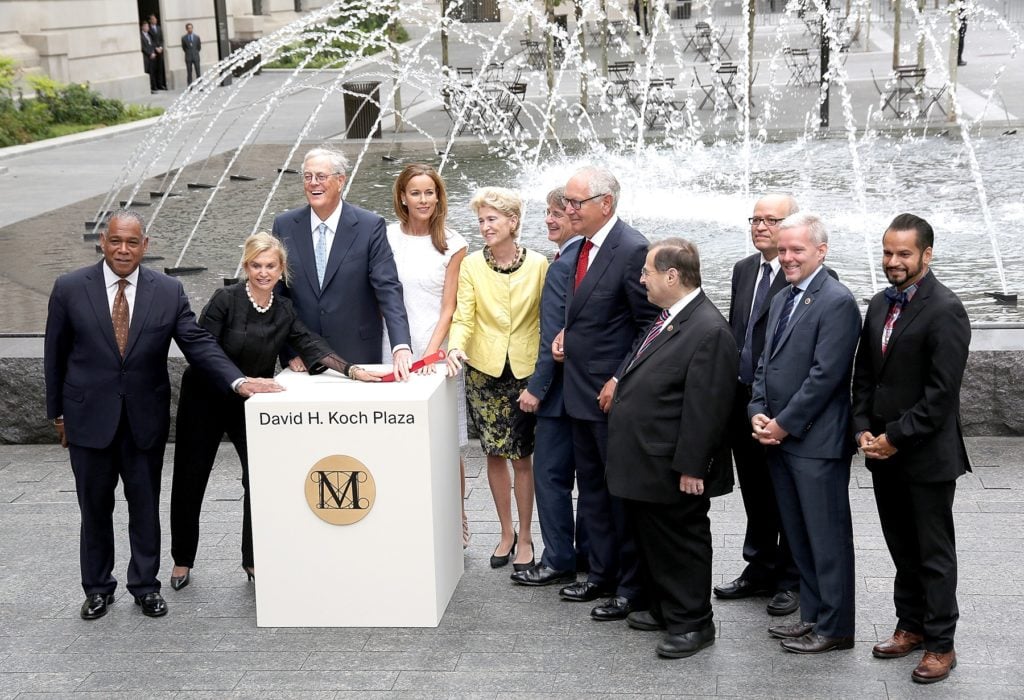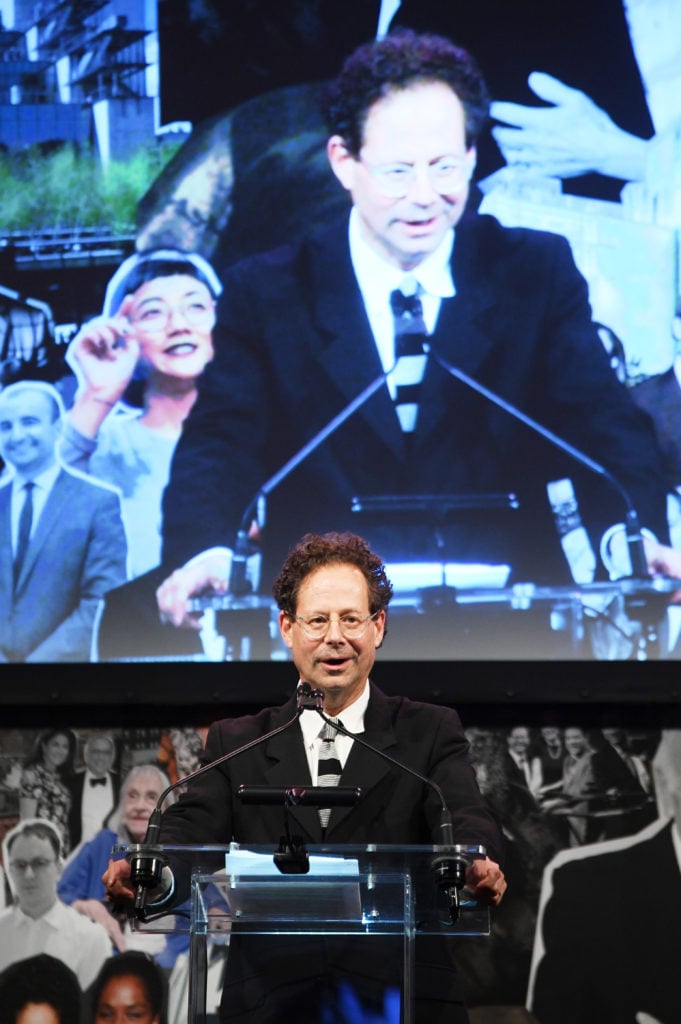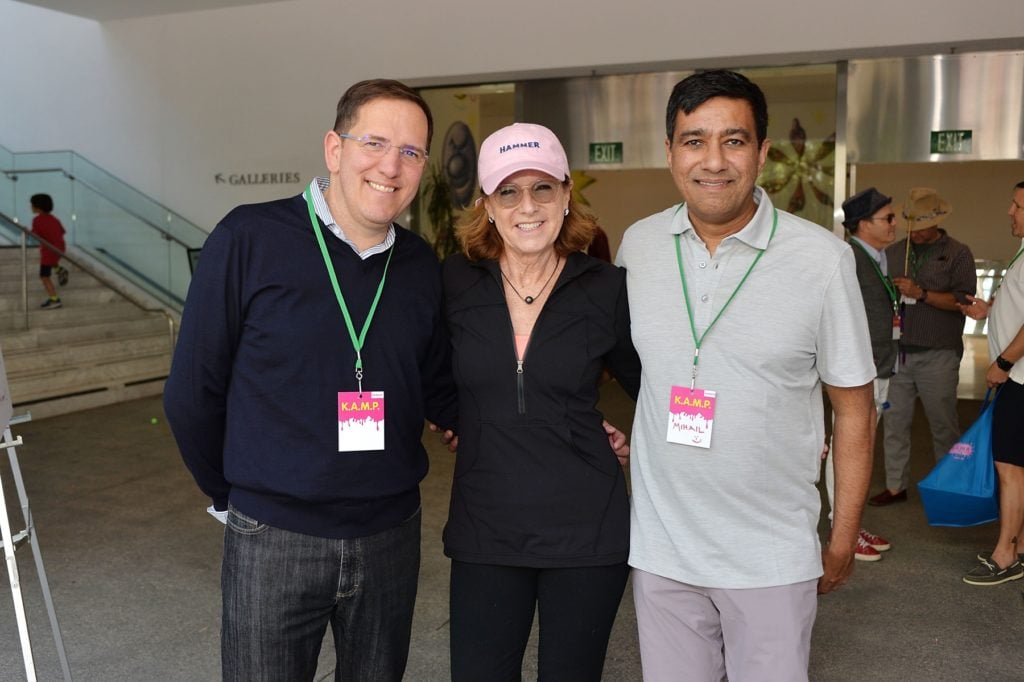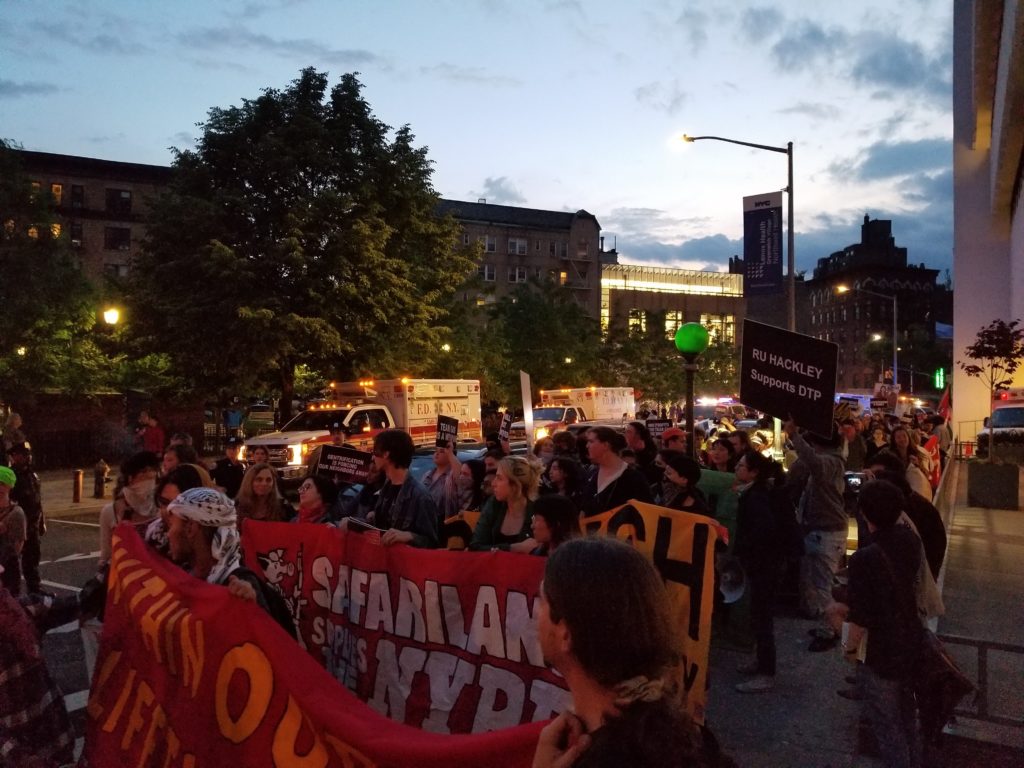Politics
‘What Is Considered Evil?’: How US Museum Leaders Are Grappling With the Fallout of Warren Kanders’s Controversial Resignation From the Whitney
Museum trustees and administrators are debating the new rules of ethical philanthropy.

Museum trustees and administrators are debating the new rules of ethical philanthropy.

Eileen Kinsella &
Rachel Corbett

Activists and artists have been pushing out what they consider “toxic” museum philanthropists at an unprecedented pace in recent months. In a spectacular development, in late July, Warren Kanders, whose company Safariland manufactures tear gas, resigned from his position as vice chair of the Whitney Museum’s board after eight artists threatened to withdraw their work from the current biennial in protest of his presence. Meanwhile, museums around the world have started rejecting funding from the Sackler family, which manufactured and aggressively marketed the addictive painkiller OxyContin.
Now many activists and philanthropists alike are wondering, what’s next?
There is no shortage of potential targets: The anti-climate-science David Koch is a trustee emeritus of the Metropolitan Museum (with his name on the fountain out front), while David M. Rubenstein, whose wealth is linked to the fighter jets used in the slaughter of Yemeni civilians, donated $10 million to the Smithsonian’s National Museum of African American History and Culture and sits on the Smithsonian’s Board of Regents. New York magazine went so far as to put out a list last week of the “Most Toxic Museum Boards.”

The unveiling of the David H. Koch Plaza at the Metropolitan Museum of Art on September 9, 2014, with David H. Koch, third from left. Photo by Paul Zimmerman/WireImage.
Meanwhile, museum leaders are caught in the middle. The balancing act between serving their communities and securing future funding seems increasingly precarious, and everyone is looking for a formula to mediate the escalating tensions between the two sides.
“Museums depend heavily on philanthropy. How do they start dissecting what’s okay and what’s not in terms of their policies?” says Komal Shah, a trustee of the San Francisco Museum of Modern Art and Tate Americas who worked for many years in the tech industry. “There’s no black and white. Since I come from the tech world, I’m wondering if at some point Google or Facebook was deemed evil, do museums stop taking their money? And what is considered evil? How do you really define?”
Some with ties to museum boards spoke of soul-searching conversations that are going on in the wake of the recent protests. Others expressed deep anger and frustration with the tenor and tone of the recent controversies, comparing the protesters to reckless mobs or insinuating that they were distancing themselves from museum patronage altogether.
Few, however, wanted to go on the record. Of the two-dozen museum leaders and trustees we reached out to for comment, the vast majority did not respond or declined to comment, including representatives from the Metropolitan Museum, the Brooklyn Museum, the Museum of Contemporary Art Chicago, the Morgan Library, the Los Angeles Museum of Contemporary Art, and the Noguchi Museum.

Adam Weinberg speaks onstage during the 2019 Whitney Museum Of American Art Gala + Studio Party. Photo by Dimitrios Kambouris/Getty Images.
“We find ourselves in the company of many other museums and non-profits that are facing these challenging and complicated issues,” Whitney Museum director Adam Weinberg told artnet News. “Over the last eight months, we have done what our mission calls upon us to do, which is to support artists and to provide a platform for them to completely and freely express their visions. This experience has underscored how we, and other institutions, must balance the interests and concerns of our artists, trustees, and staff if we are going to fulfill our cultural and civic mission.”
The philanthropists who spoke with artnet News generally tended to support some form of vetting of the source of donors’ wealth.
“If you’re complicit with someone who is involved in what seems to be a criminal or monstrously unethical enterprise, I don’t think it’s a good idea to help that person launder their reputation,” said Nion McEvoy, a trustee of the San Francisco Museum of Modern Art and former trustee of the Smithsonian American Art Museum.
When it comes to Kanders, McEvoy said he wasn’t familiar with the entire situation, but added, “I’m particularly sensitive about issues of suppression of freedom and the rise of authoritarianism, so I probably would have recused myself from the board if he was going to stay on.”
“Just because an institution supports tough or radical art does not allow it to receive a pass when questions come up about their financial supporters,” said Hammer Museum trustee Mihail Lari. “Raising money is critical, but museums have something even more valuable: their reputations and cultural currency that can disappear overnight if not protected at every step.”

Scott Murray, Ann Philbin, and Mihail Lari attend Hammer Museum’s Kids’ Art Museum Project 2016 in Los Angeles. Photo by Stefanie Keenan/Getty Images for Hammer Museum.
It’s even possible, as Tim Schneider has suggested, that some museums could actually win new support from funders who see institutions as defending that reputation by taking a moral stand. “We’re fortunate to have Annie Philbin as museum director who has a very strong north star,” Lari said of the Hammer Museum’s current director. “This means we sometimes decline financial support because of where it is coming from or the strings attached. We’re also kept honest because we have a stellar group of artists as advisers on our Artists Council, and have two artists serve on our Board of Overseers.”
McEvoy, for his part, suggests that museums need to redefine the terms of funding in board vision statements. “Nonprofits should probably do a better job of drafting guidelines pertaining to board service and stating their values so that it becomes clear what things might cross the line,” he argues. “The first duty is to preserve the good will of the people. You can’t do that if you have a board that seems to do things that a large number of people feel are monstrous and wrong.”
Shah, for one, cautioned against museum critics taking a blanket approach. “I can understand what the artists are thinking and that they are standing up for what they believe is right,” she says. “There’s a tension. Each institution and each incident is specific. Most boards in general are extremely well meaning and have policies about conflicts of interest. As a trustee I have to sign numerous forms every year.”

Protesters marching from the Whitney Museum to the home of Warren Kanders. Courtesy of Decolonize This Place.
Others, like collector and philanthropist Martin Margulies, expressed much more blunt criticism of the recent Kanders controversy, which involved protests both at the museum and in front of Kanders’s West Village house. “I believe this went beyond freedom of speech, walking in front of a man’s home and drawing attention away from the mission of the great Whitney Museum,” said Margulies, who has donated both to the Whitney and the Museum of Contemporary Art North Miami.
“Knowing this will harm the museum and museums beyond, I question the motivation of many of these protesters,” Margulies continued. “Mr. Kanders has no control over how the products he has the right to sell are used, such as the tear gas used by police in Charlottesville and riots throughout the country. Those decisions are made by leaders in our government. Do the artists inspect the background of every collector who buys their artwork? As a founder of the Lotus Village in Miami, a 521-bed facility for homeless women and children, I would welcome Mr. Kanders’s philanthropy to a life saving institution.”
Opinions are sure to diverge still more in the future if protests sharpen again. Following Kanders’s resignation, the activist group Decolonize This Place, which organized many of the initial protests, wrote in a post on Hyperallergic: “We celebrate this win, and we acknowledge the work of everyone who contributed to this outcome over the course of eight months of organizing and action.”
When asked what’s next for the group, they responded: “We see the removal of Kanders as one step in an ongoing project of decolonization. This project includes the Whitney and the broader art system itself, but necessarily exceeds both.”